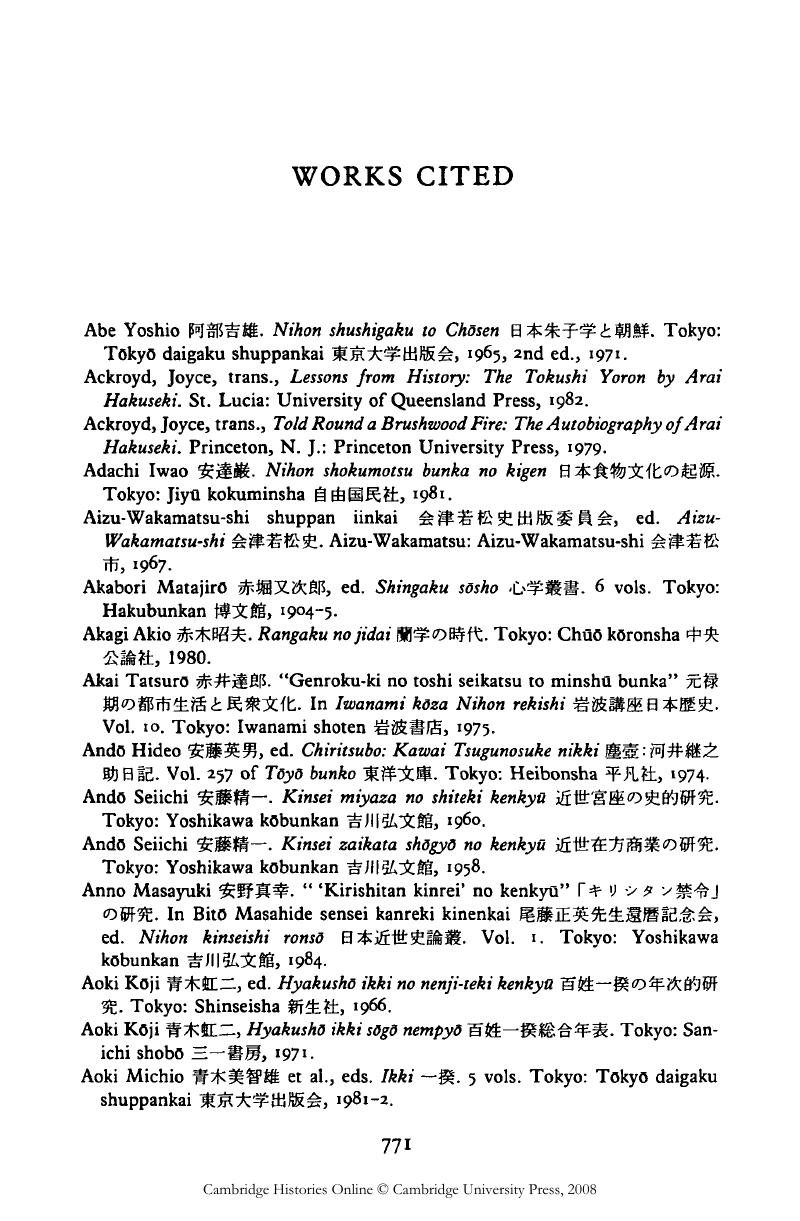Book contents
- Frontmatter
- 1 Introduction
- 2 The sixteenth-century unification
- 3 The social and economic consequences of unification
- 4 The bakuhan system
- 5 The han
- 6 The inseparable trinity: Japan's relations with China and Korea
- 7 Christianity and the daimyo
- 8 Thought and religion: 1550–1700
- 9 Politics in the eighteenth century
- 10 The village and agriculture during the Edo period
- 11 Commercial change and urban growth in early modern Japan
- 12 History and nature in eighteenth-century Tokugawa thought
- 13 Tokugawa society: material culture, standard of living, and life-styles
- 14 Popular culture
- Works Cited
- Index
- Provinces and regions of early modern Japan
- References
Works Cited
Published online by Cambridge University Press: 28 March 2008
- Frontmatter
- 1 Introduction
- 2 The sixteenth-century unification
- 3 The social and economic consequences of unification
- 4 The bakuhan system
- 5 The han
- 6 The inseparable trinity: Japan's relations with China and Korea
- 7 Christianity and the daimyo
- 8 Thought and religion: 1550–1700
- 9 Politics in the eighteenth century
- 10 The village and agriculture during the Edo period
- 11 Commercial change and urban growth in early modern Japan
- 12 History and nature in eighteenth-century Tokugawa thought
- 13 Tokugawa society: material culture, standard of living, and life-styles
- 14 Popular culture
- Works Cited
- Index
- Provinces and regions of early modern Japan
- References
Summary

- Type
- Chapter
- Information
- The Cambridge History of Japan , pp. 771 - 812Publisher: Cambridge University PressPrint publication year: 1991
References
- 1
- Cited by



